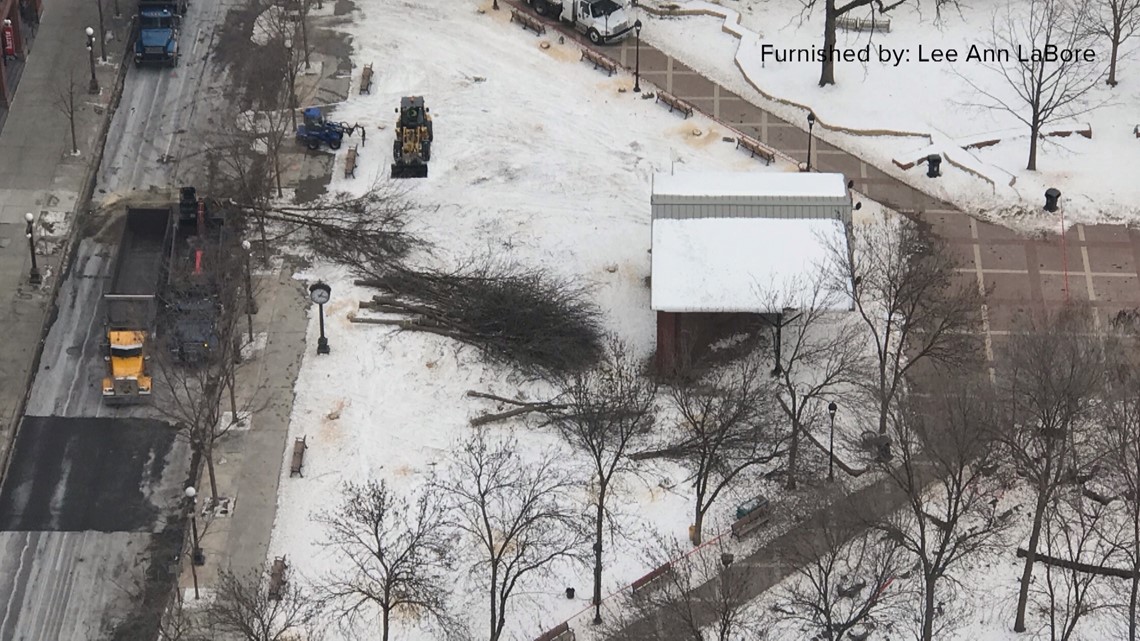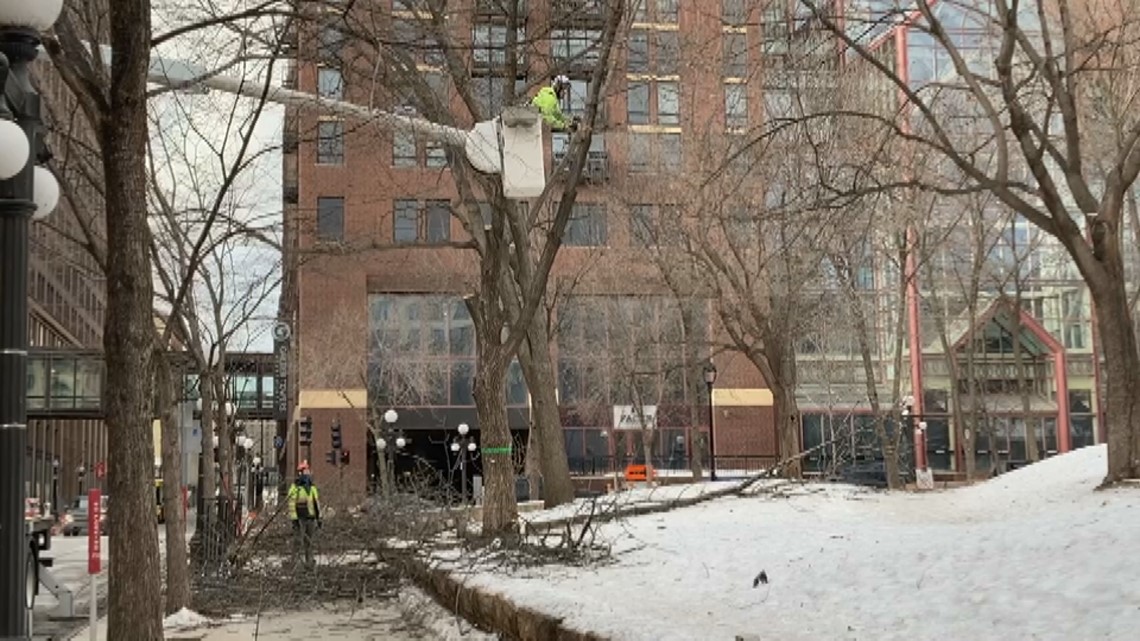ST PAUL, Minn. — It's hard not to notice the recent change to Mears Park in St. Paul's Lowertown: 39 ash trees removed due to an emerald ash borer infestation.
"The whole triangle, everything came down," said Lee Ann LaBore, pointing to the space in which the trees were removed in February.
LaBore is co-chair of the volunteer group, Friends of Mears Park, and lives nearby with a bird's-eye view of the park.


The city has been removing trees infested with the invasive beetle since it arrived in St. Paul back in 2009. Originally, the removal was done to contain the pest, but now that it's widespread the focus is on dealing with the dying trees. The city calls it "structured removal."
"They dry out very quickly and the wood becomes very brittle, so they tend to start falling apart pretty quickly," said Rachel Coyle, Urban Forester Supervisor for the city's parks and recreation department.


Trees will be planted in their place this spring, a variety of species which will help make the park's urban canopy more resilient to other invasive species and even the changing climate.
"We are looking to the future with the potential impacts of climate change and looking at species that might grow in a little bit warmer climates," said Coyle. "If you have several different species planted on a park or a city street, you're just making the forest a little bit more resilient to anything that could come in later."
LaBore looks forward to when the park's open space will be filled back in.
"The silver lining is we'll get some beautiful trees to replace them," she said.

